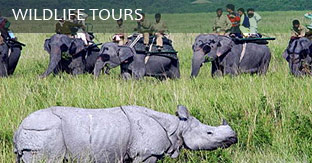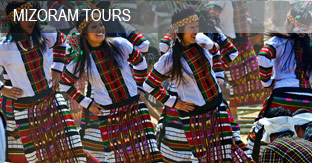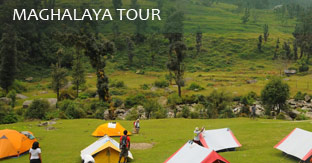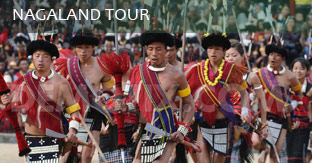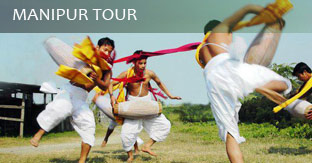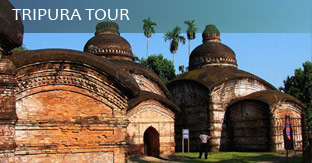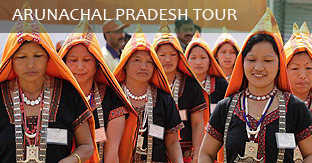ABOUT SIKKIM TRAVEL
The beautiful hill state of Sikkim lies on the eatern tip of the Himalayas bordered by Bhutan, Nepal an Tibet.
Sikkim is famous for Kanch-Endzonga, at 598 mtrs, which is third highest mountain in the world. Being second smallest state in India, Sikkim covers 7,096 sq kms and measures 110 kms from north to south and 64 kms from east to west. It encompasses the upper valley of Teesta river, a tributary of the Brahmaputra. The watershed form the borders with Tibet and Nepal. Rangit and Rangpo rivers form the border with West Bengal. Sikkim is separated from Nepal in the west by the Singalila range while Donngkya range is the border to the north & north-east.
Sikkim is broadly divided into four districts. The east district with capital city of Gangtok is the hub of all administrative activity. The famous Rumtek Monastery, the Dharma Chakra Centre and the seat of his Holliness Gyalwa Karmapa, all are located here. Other places of interest include the Tsomgo Lake and the Nathula Pass.
A most beautiful district, the North District is an abundance of the natural splendour and Alpine scenery. During spring time, the meadows are alive with exotic wild flowers that cover the valley in charming hues. The hot springs and tribal customs & culture here are very attractive.
The west district offers the ultimate in adventure. From white water rafting on the foaming Teesta and Rangit, to trekking through thick Rhododendron forests- the district offers it all. A breathtaking view of Mt Kanch-Endzonga can be had from Pelling that has developed as a major tourist attraction. The sacred lake of Khechiperi also lies close to Pelling. The Osuth District is home to some of the oldest monasteries in the state. Adventure treks to Maenam and Tengdong Hill originate from Rawangla. The region is also just-right for mountain biking and nature watching.
WILDLIFE IN SIKKIM
Sikkim’s local name ‘Denzong’, which means the ‘Valley of Rice’ is apt, since rice is the main crop here. The jungles abound in plantains, bamboo tree ferns, walnut, oak, pine and silver fir. Sikkims Orchids are known the world over and number more than 450 species. The state flower is the Nobile Orchid. Also, there are around 36 species of Rhododendrons found at heights of 10000 ft.
Since the area of Sikkim ranges from the tropical to the Alpine, the flora and fauna is unique. There are more than 500 species of avifauna, ranging from the majestic Bearded Vulture to the few inches long Olive Ground Warbler. Other species include the Emerald Dave, Woodpeckers, Cuckoos and Kingfishers. The forests are the habitat of the Barking Deer, Red Panda, Leopard Cats and Flying Squirrels, among other animals.
Alpine Adventure
The mountains of Sikkim offer great experience to all trekkers, mountaineers and seekers of adventure. All one needs is to be reasonably fit and in good shape. The unrivalled high altitude Alpine treks of Dzongri at 128000 ft and Goechala at 18000 ft, are both breathtaking and awe-inspiring. Also, if one is inclined for some white water action, the rivers Tista and Rangeet beckon. Sikkim Tourism organises river rafting packages through recognized tour operators. Besides these, facilities are also available for mountain biking and rock climbing, with instructors from the Sonam Gyatso Mountaineering Institute in Gangtok.
FAIRS AND FESTIVALS IN SIKKIM
Maghe Sankranti Mela
A three day holy festival of the Hindus celebrated along the river banks with huge fairs.
Bumchu
It is held in the month of January/February in the monastery of Tashiding. The abbot of the monastery unveils a pot of holy water and foretells the future of the state.
Losar
This festival is held around the festive month of February to celebrate and welcome the Tibetan New year with feasting and merry-making.
Saga Dawa
Held during the month of May, this festival celebrates the triple blessed day of Buddha’s Birth, Enlightenment and Maha parinirvan in most of important monasteries in Sikkim.
Pang Lhabsol
Unique to Sikkim, this festival worships the snow peaks of Mount Kanchendzonga. An important feature of the celebration is the warrior dance with its intricate steps and leaps accompanied by martial war-cries.
Tendong Lho Rum Faat
This festival celebrates the event, when according to legend, the Thedong Hill had risen to save the Lepchas, during a great flood.
Dasain
It is the main festivals of Hindu Nepalese in Sikkim. It signifies the victory of good over evil. The elders of the family apply ‘Tika’ on the young and bless them.
Tihaar
This festival is celebrated as the festival of lights with the lighting of lamps accompanied with traditional carols called Deusi and Bhakti.
Losoong Festival
This Bhutia festival marks the end of harvest season and also the end of the Tibetan year. It is celebrated with religious dances (Chaams) in the monasteries of Tsug Lakhang, Phodongand Rumtek along with family gatherings , feasting and archery contests.
THE FOUR JEWELS OF SIKKIM
East District
The capital city Gangtok is located here and it is the hub of all government activities. The world famous Rumtek Monastery, the Dharma Chakra center and the seat of His Holiness, the Gyalwa Karmapa is located here in addition to the alpine Tsomgo lake and Nathula Pass.
West District
The West District offers all adventure activities. river rafting, trekking, mountaineering etc begin here. The rivers Teesta and Rangeet attract white water rafting revelers in large numbers.
North District
The famous Shingbha Rhododendron sanctuary as well as the Khangchendzonga National Park is located here. During spring time, the meadows of Yumthang abound with wildflowers, which carpet the valley in a riot of colours. The Hot Springs and rich tribal culture and customs are other attractions.
South District
Most famous monasteries are located here. A 108 ft high image of the patron saint of Sikkim, Guru Padmashambhava is situated near the district headquarters at Namchi. Ravangla Base Camp offers trekking upto Maenam and Tendong Hill here. Varsey Rhododendrons Sanctuary is also located here.

